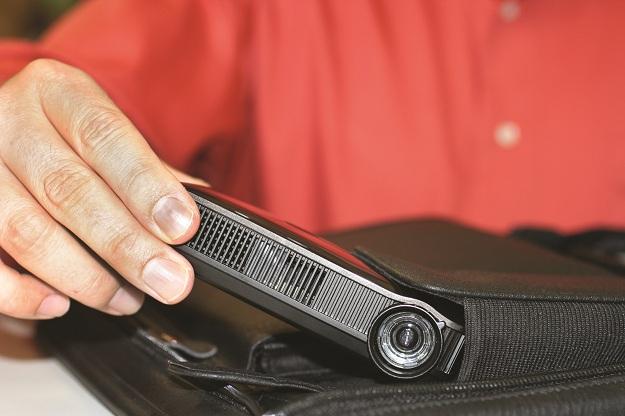 There was a day when a projector was considered an office product, and that is it. They were expensive and used only for presentation. As the years have passed and technology has grown, the projector has morphed into something more. Earlier today at CES Unveiled, Optoma introduced two new projectors that further expand the potential of projectors, including the PK320, an 8 ounce pico projector that can display HD graphics and fit in the palm of your hand, and the ML300, which can stream content from your computer to the projector.
There was a day when a projector was considered an office product, and that is it. They were expensive and used only for presentation. As the years have passed and technology has grown, the projector has morphed into something more. Earlier today at CES Unveiled, Optoma introduced two new projectors that further expand the potential of projectors, including the PK320, an 8 ounce pico projector that can display HD graphics and fit in the palm of your hand, and the ML300, which can stream content from your computer to the projector.
The PK320 measures just 4.7” x 1.2” x 2.7”, but can project an 1280 x 800 HD image at a 16:9 ratio, that can stretch to 150” ant 100 lumens of brightness. When unplugged, it can run at 25 lumens for about an hour.
Thanks to onboard software, it will easily accept Microsoft Office files, as well as AVI, MP4, 3GP, and WMV files. It connects via mini-HDMI, VGA, composite, micro USB, and there is a 3.5 mm stereo out connection. That means that it can connect to anything from a computer to a gaming system to a smartphone.
The PK320 is due out later this year, and is expected to cost around $499.

The ML300 offers a 300 lumen display that can project a 1280 x 800 HD picture, at a 16:9 ratio, all while still weighing 1.4 lb and measuring just 7.2” x 1.8” x 4.4. It can also create an image close to 200”. The ML300 also contains 2 GB of internal memory and a microSD slot that supports up to 32 GB.
The projector can handle most common video files, including: H.264 (AVI, MOV, MP4, 3GP), MPEG4 (AVI), Xvid (AVI), and MJPEG (AVI). It can also playback MP3 and AAC audio files. It can also stream content directly from a computer to the device.
The ML300 also utilizes all the connections as the PK320, as well as a slot for a USB flash drive. Both units will also ship with a remote.
The ML300 will be released later this year, and is expected to run $449.


